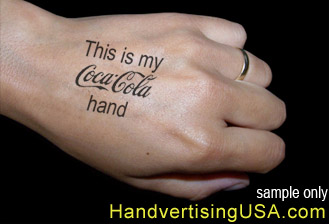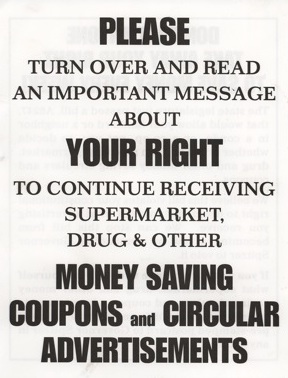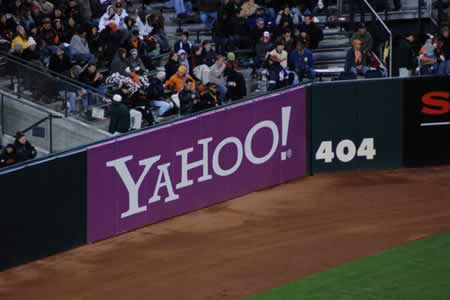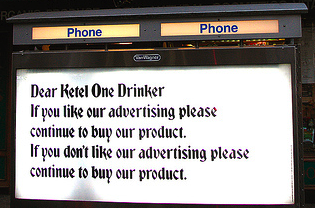New term, folks: “Damnvertising” is when a new ad campaign or mode of advertising comes along that is so brilliant, it makes you go, damn!
Which is exactly what I said to myself when I received a forwarded press release heralding the arrival—finally!—of Handvertising.
 Handvertising, according to the press release, is a new advertising trend (although according to the company’s website no one’s actually used it yet) that is causing (and I quote) “advertisers [to] look at your skin in a whole new way!â€
Handvertising, according to the press release, is a new advertising trend (although according to the company’s website no one’s actually used it yet) that is causing (and I quote) “advertisers [to] look at your skin in a whole new way!â€
Of course, this “whole new way†is “as a space for more advertising,†which doesn’t seem to me to be a terribly new way for advertisers to look at anything anymore, but what do I know? My hands currently promote nothing except that I need to buy some more cat food.
“Almost everyone has been to a county fair, swap meet, bar, or club and had had their hand stamped for proof of entry. We have found a better use for this space that could make everyone happy . . . Advertisers are always looking for a new and exciting way to promote their brand. Handvertising USA offers a unique way to do this and everyone benefits,†said Mike. Which is totally, 100% true. Except for that one person who doesn’t benefit: the owner of the hand. Oh and also: the viewers of that hand. So I guess by everyone, Mike Brown, CEO of Handvertising USA really means advertisers. And Mike Brown.
The press release—its own form of advertising (and what a bummer it was in boring old email form, and not scrawled across the back of some shirtless delivery boy! Think of the potential! Backvertising!)—even provides detail on the origination of the trend’s unique name. “What do you call advertising on your hands? ‘Well I like to call it Handvertising,’ said Mike Brown CEO of Handvertising USA.†Further, the release urges recipients to write immediate stories and blog posts about this exciting new trend. “Use our recent Press Release to get ideas,†it offers helpfully, “or you can simple [sic] paste the whole thing word for word.â€
Which I would have done in a heartbeat. Unfortunately, in an effort to protect his intellectual property (by which I guess I mean my hands), Mike Brown, CEO of Handvertising USA added this warning notice to the bottom of his release: “INFORMATION IN THIS E-MAIL AND ANY ATTACHMENTS IS CONFIDENTIAL, AND MAY NOT BE COPIED OR USED BY ANYONE OTHER THAN THE ADDRESSEE, NOR DISCLOSED TO ANY THIRD PARTY WITHOUT OUR PERMISSION.†Damn!


 The spin on this direct mail campaign to save
The spin on this direct mail campaign to save 




 In a similar vein, friend of the AAA
In a similar vein, friend of the AAA 
 There was an article in the
There was an article in the 


IllegalSigns.CA, we love you.
If you ever looked at the overwhelming amount of advertising in urban spaces and questioned whether or not you can make a difference, you most certainly can. Meet Rami Tabello, the man behind my new favorite website: IllegalSigns.CA. The Toronto based site tracks illegal signs, as well as lax enforcement through freedom of information requests and old-fashioned sleuthing. Since starting earlier this year, his organization was able to remove 200 illegal signs in just their first 2 months.
I’m still a bit speechless by how awe-inspiring this effort is, so I’ll let them explain…
Another amazing tidbit pulled from a piece on illegalsigns.ca in Canada’s Marketing Daily: